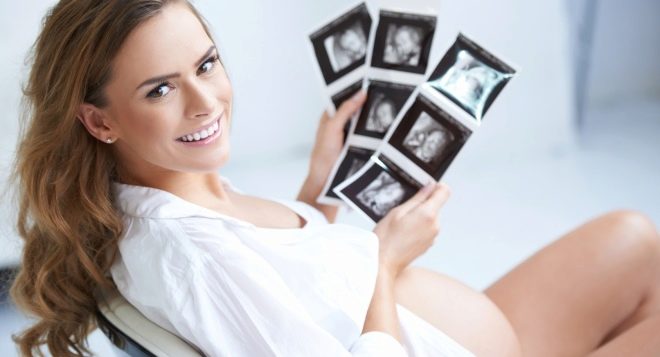Features of temperature after embryo transfer during IVF
All the complex and debilitating stages of in vitro fertilization are left behind. Embryos are transferred to the uterine cavity. Along with other recommendations, a woman receives advice from a reproductologist daily to monitor the temperature. Why it should be done, what should be the temperature after embryo transfer during IVF, and what deviations can be, we will tell in this article.
Special features
To begin with, it should be said that after IVF it is important to monitor two types of temperature - body temperature and basal temperature. The first is measured in the usual way - with a mercury or electronic thermometer in the armpit. Women planning pregnancy are usually well acquainted with the basal temperature - it reflects the processes occurring in the body in a more precise degree.
BT (basal temperature) is measured strictly in the morning after waking up, without getting out of bed, that is, before rising. Get up, go to the toilet, and then you can not measure the temperature - the results will be inaccurate.
Therefore, the thermometer is prepared in the evening and placed on the bedside cabinet, so as not to stand behind him and far from reach out. Every morning, at the same time, a thermometer is inserted either into the anus or into the vagina to a depth of 2-3 centimeters. They fix the temperature in a few minutes (usually 7-10 minutes is enough) and record it in a special schedule.
In this case, be sure to use the same thermometer, since different thermometers can show excellent values.
Temperature changes
The body temperature after embryo grafting in a woman can increase to 37.0-37.5 degrees. This is considered a variant of the norm, and not a cold, as some women think. The fact is that hormonal stimulation of the ovaries, which took place at the initial stage of the protocol, as well as progesterone support at this stage significantly weakens the immune system of the woman.
This internal mechanism is important for the unborn child. Embryos are a foreign body, in terms of immunity. Only half of them are made up of female DNA. The second half is the DNA of the man, which the immunity regards as alien. If a donor egg cell was used for conception, then there is nothing “native” in the embryo for the woman’s body at all. Reduced immunity is necessary so that the embryos get a chance for implantation, are not rejected.
It is precisely in response to a decrease in defenses that the body raises the temperature in order to create the most unfavorable conditions for development and existence in the event of an invasion of a virus or bacteria. Basal temperature rises for the same hormonal and immune reason. But its normal values after the transfer - above 37.0 degrees and up to 37.5 degrees.
During the period of implantation, and after the transfer, a single basal temperature inhibition is possible on the chart, that is, it will decrease so that the next day it can rise again to subfebrile values.
Sometimes implantation lasts longer than 40 hours, and then the lowered temperature will last a maximum of two days.
Value fluctuations
If subfebrile temperature is considered normal, then women may be asked what kind of thermometer readings can be considered a deviation from the norm.It's all quite simple - a reduced temperature (below 37 degrees basal) for three consecutive days decreases with a deviation from the norm. Also, a deviation is considered to be a high basal temperature — above 37.9 degrees.
With regard to body temperature, the allowable increase should be at 37.5 degrees.
Higher thermometer readings is a reason to consult a doctor.
What does low bt mean? Projections for the success of IVF in the event of a significant decline, alas, are not the most favorable. The reasons may lie with a low level of progesterone, in a failed implantation, in the unavailability of the functional layer of the uterus to replant. The decrease in temperature after several days of elevated values and its persistence in low values for several days may indicate that the fertilized egg froze after attachment, the embryo no longer develops.
Low temperatures also indicate a threatened abortion. If it still happened, you need to consult a doctor to diagnose this condition and start treatment in time, which will help preserve and carry out the long-awaited child.
What is the cause of high BT? In this case, the reasons for unrest, no less. Such temperature values (especially, above 38.0 degrees) often indicate the development of the inflammatory process, as well as abnormal attachment of the ovum - for example, not in the uterus, but in the tube, neck, or isthmus of the uterus. A sharp rise in temperature after a period of low or low-grade fever may indicate the development of an acute infectious process.
Common mistakes
The most common mistake of women is to measure the temperature only after the transfer. In order to know for sure whether there are changes in the basal temperature values, it is necessary to carry out appropriate measurements and prior to transfer, and preferably, within six months (or six cycles) before entering the IVF protocol. The fact is that the level of BT can be quite individual - in some women, 36.8 is considered an elevated temperature, and in some women the average values are at the level of 37.2 -37.3 degrees. Take into account the individual nuances and make the right conclusions only on the basis of several graphs.
Often, women begin to sound the alarm about a decrease or increase in temperature, and a detailed survey reveals that such indications were recorded by her after the thermometer was replaced - all measurements should be carried out exclusively with the same thermometer, you first need to make sure that It is working and working correctly.
Mercury thermometers are more accurate than their electronic "brothers".
Different values may be, if a woman changes the place of measurement. If she measured the temperature in the anus for several days after the completion of the IVF protocol, and then for some reason decided to measure BT in the vagina, the data will differ, which will be perceived by the woman as a disaster.
Remember that any strong stress, tears, quarrels, lack of sleep, fatigue, significant changes in the daily routine and lifestyle can affect the thermometer readings when measuring the basal temperature. Body temperature is measured in the morning and evening, and BT is measured only in the morning. No other time of day is suitable for determining this indicator.
How to measure the basal temperature, you will learn from the following video.
Duration of procedures
Usually, measurements are recommended up to 14 days after the transfer, that is, within two weeks. Then comes the “moment of truth” when a blood test for hCG shows whether the pregnancy has occurred. If the test is positive, it is reasonable to continue the measurement for another week, until the first confirmatory ultrasound. This will help to understand if there is a risk of interruption, whether the hormones are sufficient.During pregnancy, BT does not decrease, and body temperature may rise daily in the afternoon to subfebrile values, and may be completely normal.
After confirmation of pregnancy only a certain category of women is recommended to continue to monitor the basal temperature and record the results in a special schedule. This group includes women with high risks of miscarriage, missed abortion, and having the sad experience of miscarriage. The rules here are exactly the same - BT should be more or less stable, with small fluctuations of tenths of a degree.
If the temperature has fallen sharply - go to the doctor, if you also sharply rose, you should also make an unscheduled visit to your doctor.
If we talk about elevated temperature after the transfer, when the outcome of the protocol is still a big question, then it cannot be argued that elevated temperature is a sign of pregnancy. She - a sign of hormonal effects, anxiety and experiences, which inevitably associated in vitro fertilization protocol.
If a woman takes progesterone (“Utrozhestan” or “Duphaston”, as well as an oily solution of progesterone) as prescribed by a doctor, the basal temperature cannot be considered anything at all except as a sign that the therapy is prescribed correctly. If it is elevated, progesterone acts. In this case, the implantation does not necessarily take place and the pregnancy will come.
Therefore, discussing the first signs of pregnancy with other ECO-Schnits before 14 days after the transfer, that is, before a possible reliable diagnosis, a woman should not make a “bet” on such a sign as high basal temperature. Her expectations may not be justified, which is fraught with serious moral injury.



















